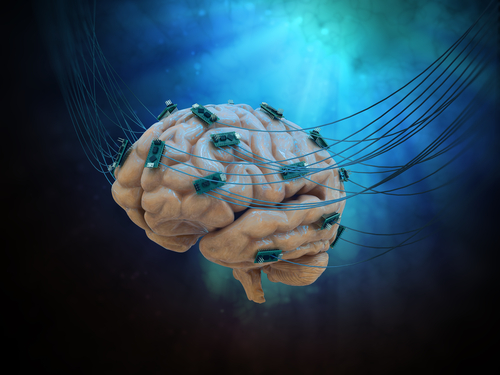Non-invasive Brain Stimulation Reduces MS-associated Cognitive Fatigue

One single session of non-invasive brain stimulation can reduce cognitive fatigue in patients with multiple sclerosis (MS), say researchers at Germany’s Otto-von-Guericke University Magdeburg.
Their study, “Electrophysiological and behavioral effects of frontal transcranial direct current stimulation on cognitive fatigue in multiple sclerosis,” appeared in the Journal of Neurology.
About 75 percent of all MS patients suffer from fatigue — one of the disease’s most debilitating symptoms — because it reduces patients’ ability to perform daily activities and hurts cognitive function.
“Despite its clinical significance, fatigue remains a poorly understood symptom with varying definitions which hampers the development of effective management strategies,” researchers wrote.
Previous studies have shown that using a non-invasive brain stimulation technique called transcranial direct current stimulation (tDCS) can reduce fatigue while improving cognitive symptoms in MS patients. However, many of these studies are subjective and based on patient self-reports, lacking objective evaluation of tDCS impact on brain function in MS.
To address this issue, researchers tested the impact of tDCS in P300 potential, which is an electrical response from the brain that can objectively assess cognitive function in the attention and memory domains.
The study included 15 patients diagnosed with MS according to the McDonald criteria, of whom one had secondary progressive MS and the remaining 14 had relapsing-remitting MS.
To deliver tDCS, researchers placed electrodes on the scalp of patients to apply low-amplitude electrical stimulus to the left dorsolateral prefrontal cortex (DLPFC) brain region, which is believed to play a role in fatigue and cognitive symptoms.
Patients underwent two 70-minute sessions, one week apart. They were asked to perform a bullseye simple reaction time task before, during, and after receiving the electrical or sham stimulus. During these sessions, researchers recorded the P300 potential and asked patients to report their perceived fatigue according to a 10-point numerical rating scale.
The team found that a single dose of less than 30 min tDCS-induced neuromodulation of the frontal cortex enhanced the P300 potential compared to the sham control. This positive effect showed to persist even after the stimulation, thus counteracting the fatigue-related effects in cognitive function.
Despite these positive results, the patients’ perceived fatigue appraisal did not improve upon tDCS. This goes against previous studies showing that tDCS offers benefits in fatigue perception.
Although P300 potential may change with a single tDCS treatment, more sessions may be needed to accumulate stimulation effects that can be subjectively detected via introspection by patients, researchers noted.
“Our findings demonstrate that tDCS over the left DLPFC [dorsolateral prefrontal cortex] can counteract performance decrements associated with fatigue thereby leading to an improvement in the patient’s ability to cope with sustained cognitive demands,” they wrote, adding that tDCS stimulation “can be an effective therapeutic option for the treatment of fatigue-related declines in cognitive performance in MS patients.”






